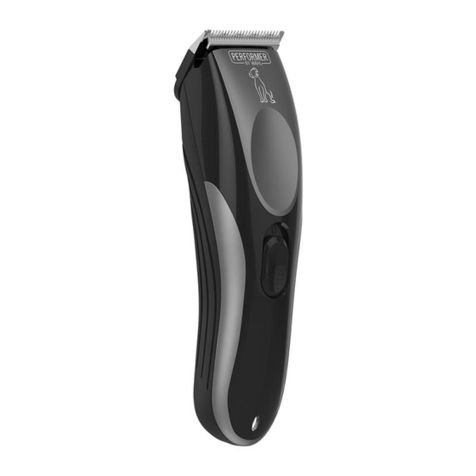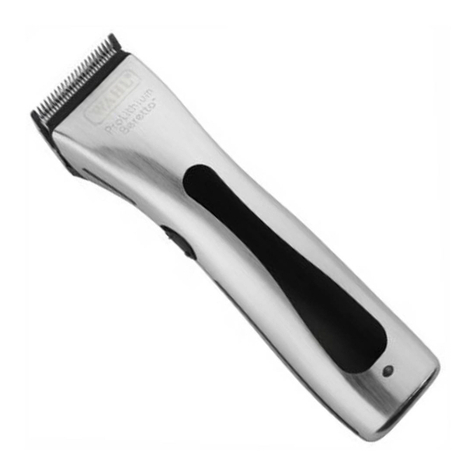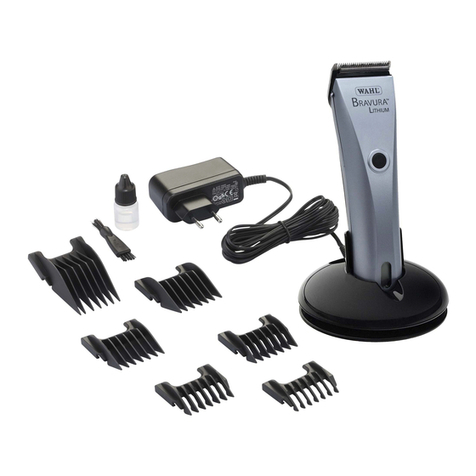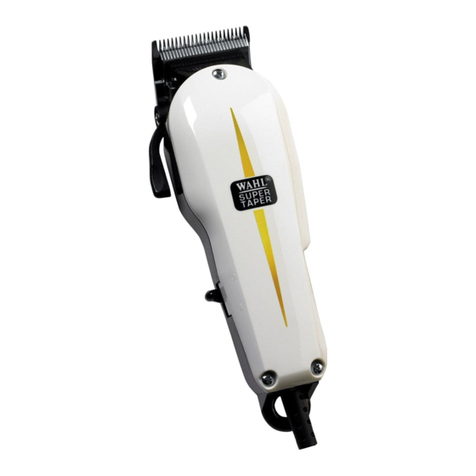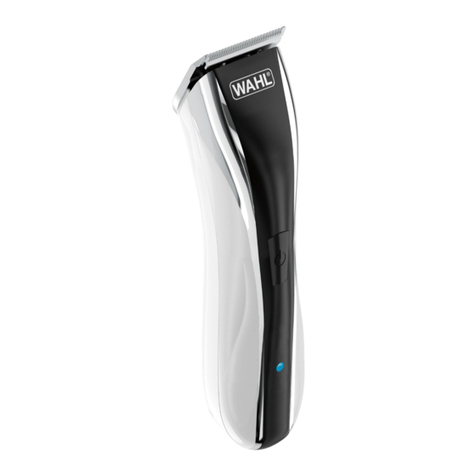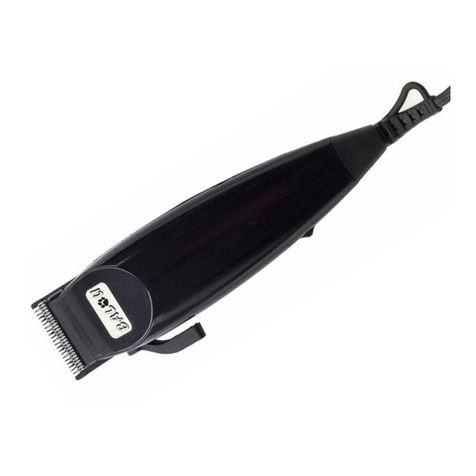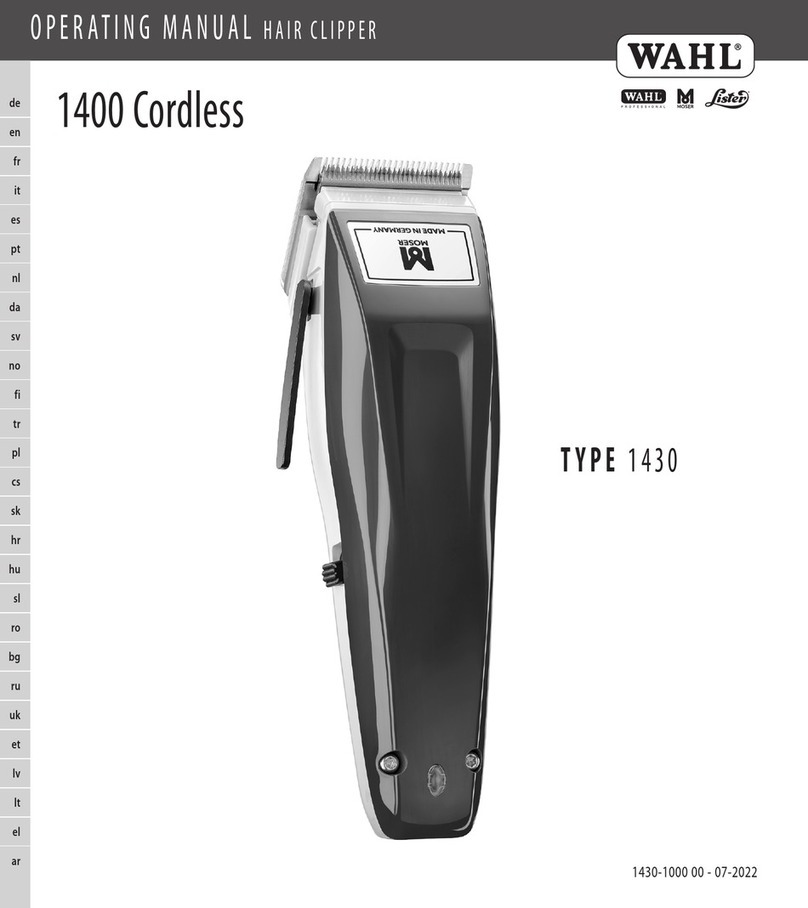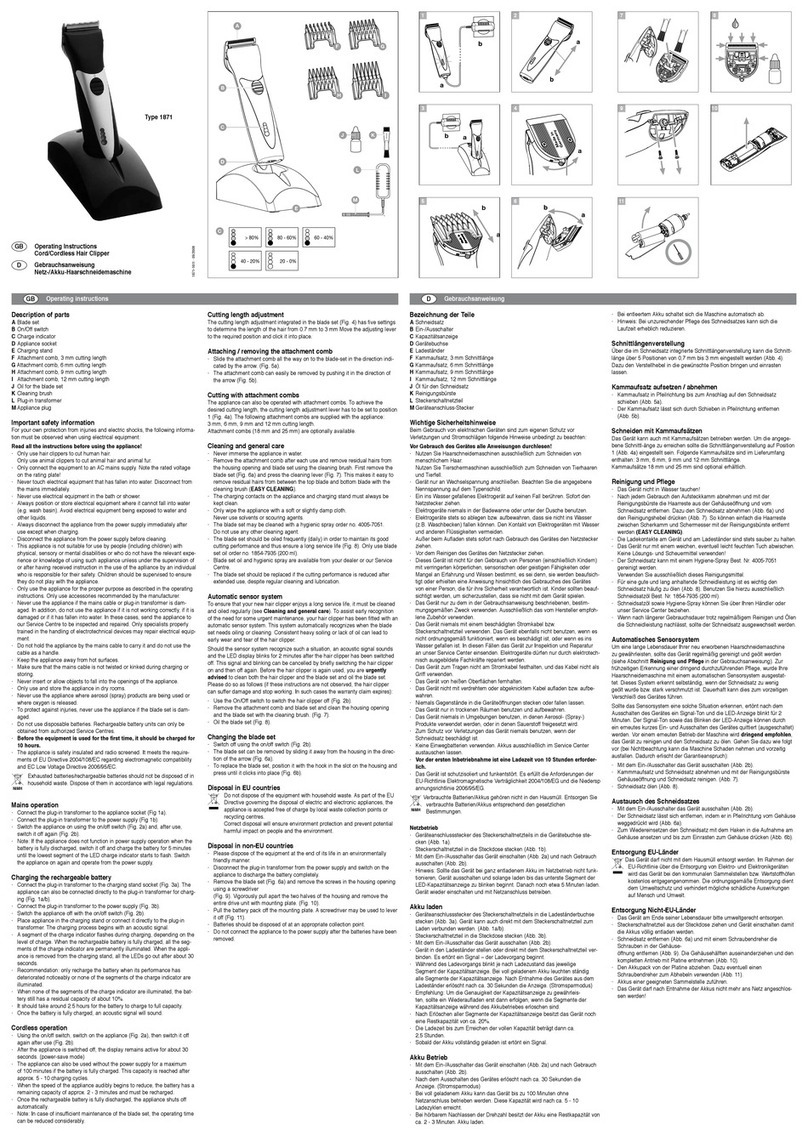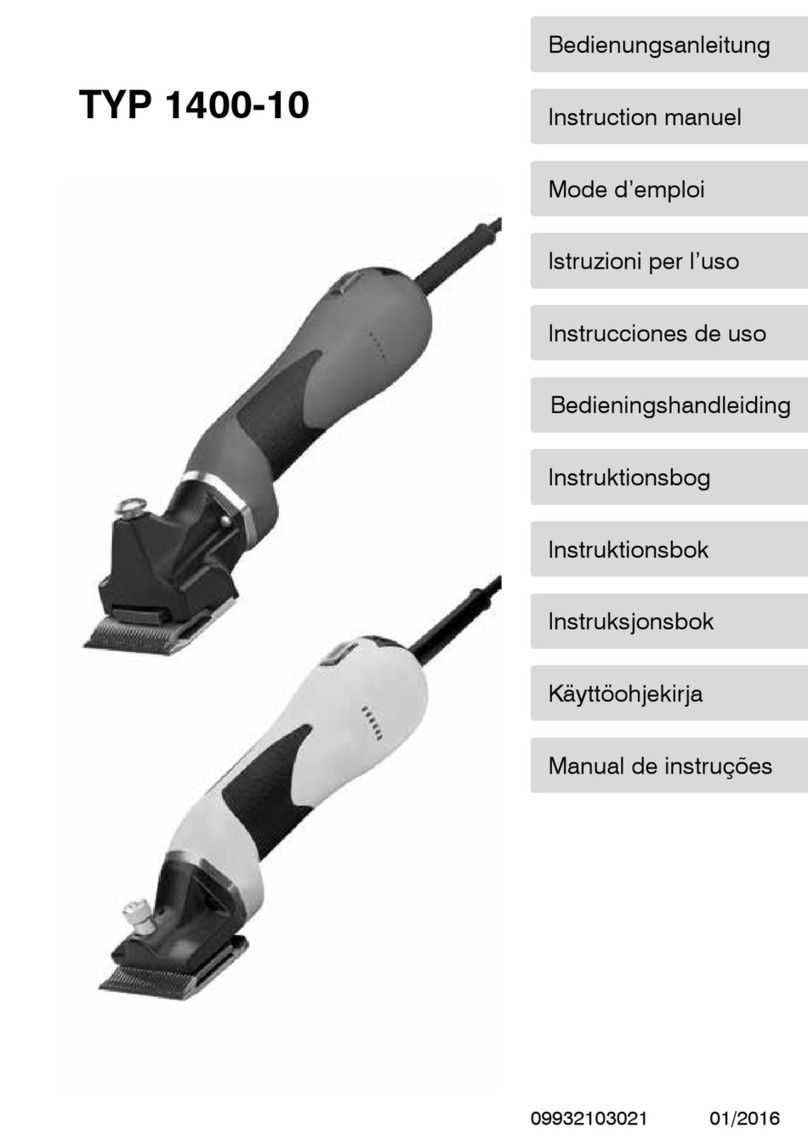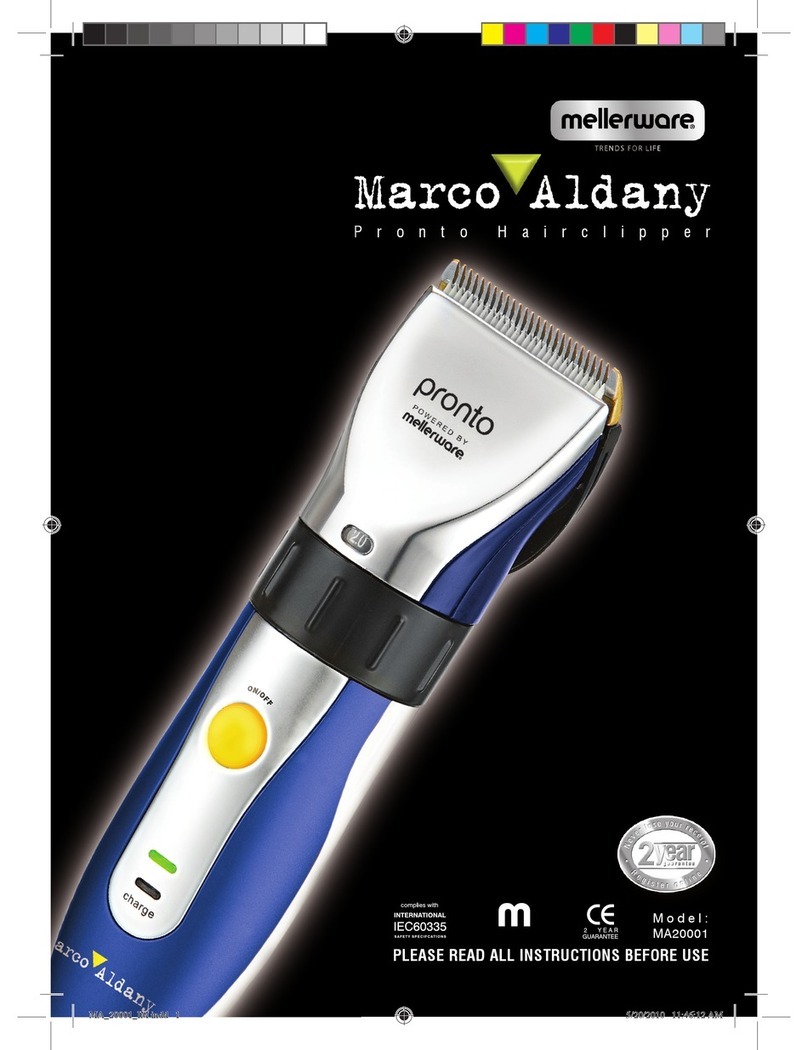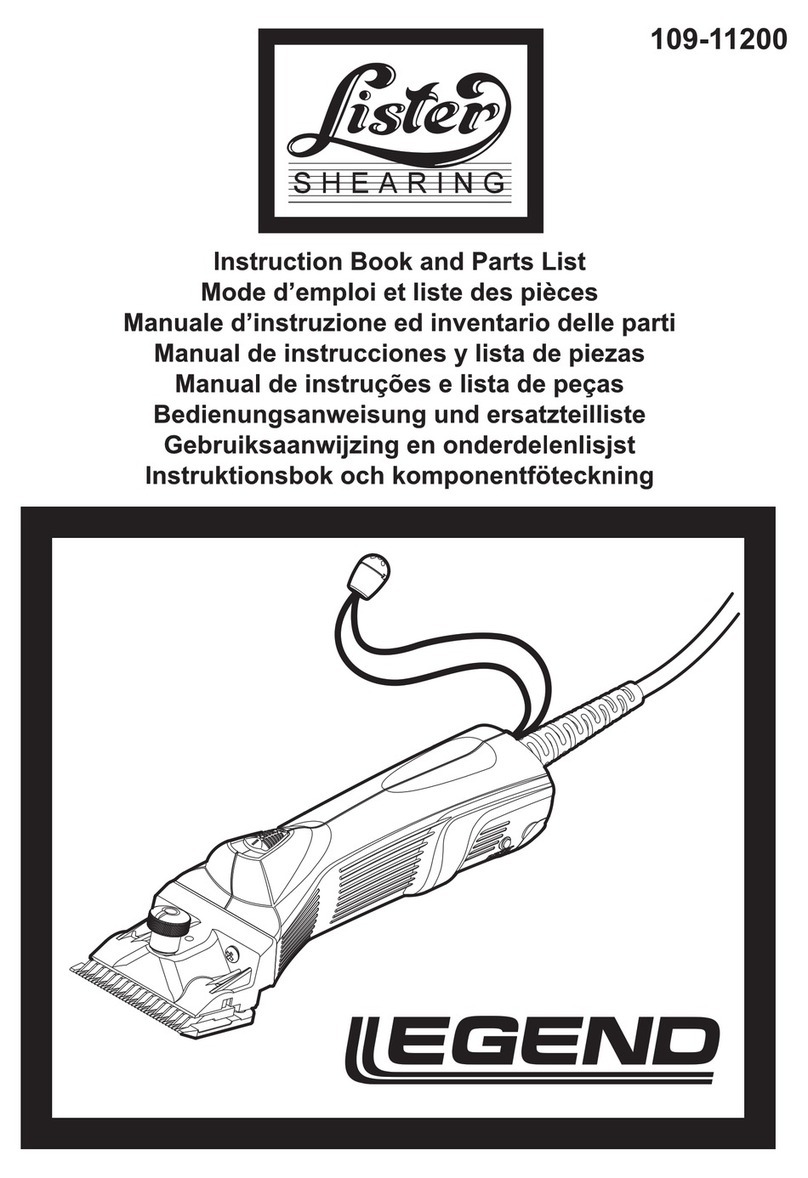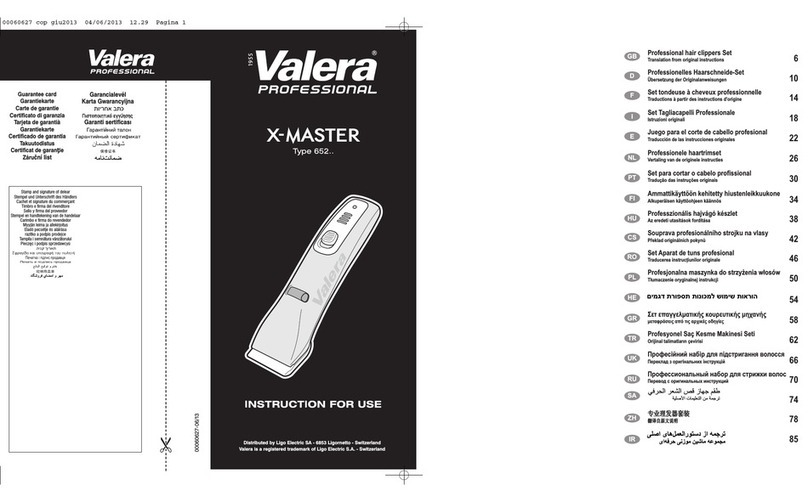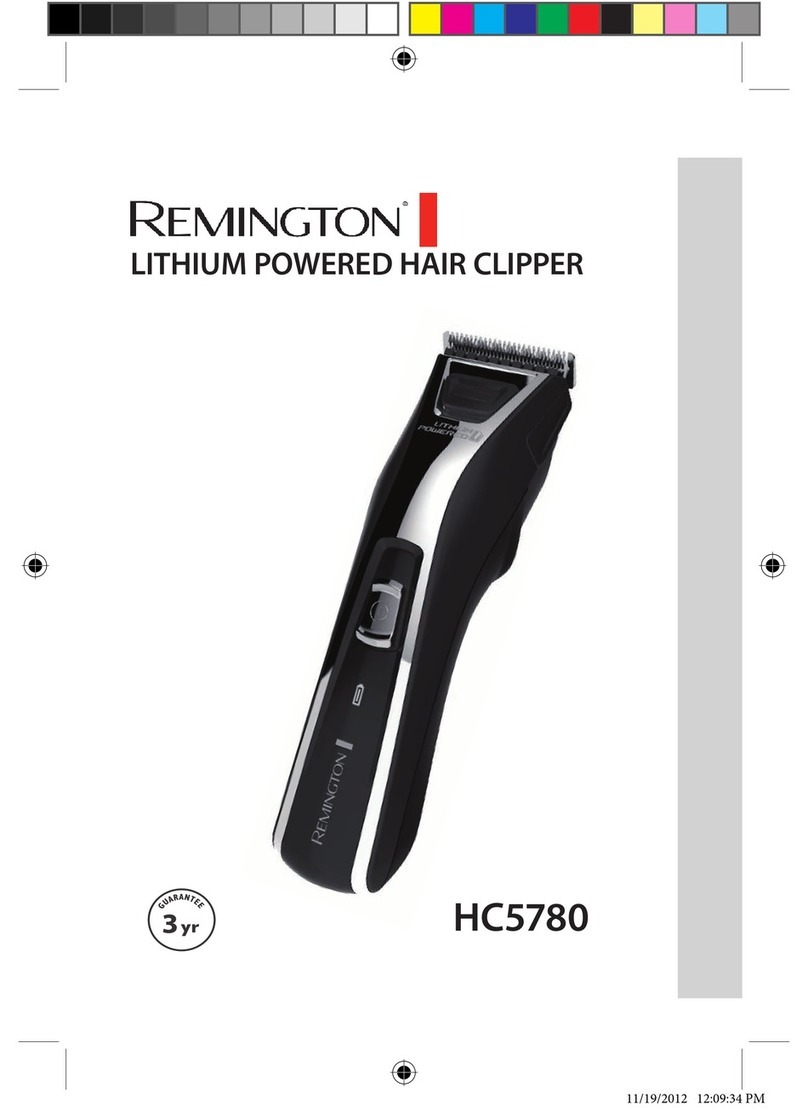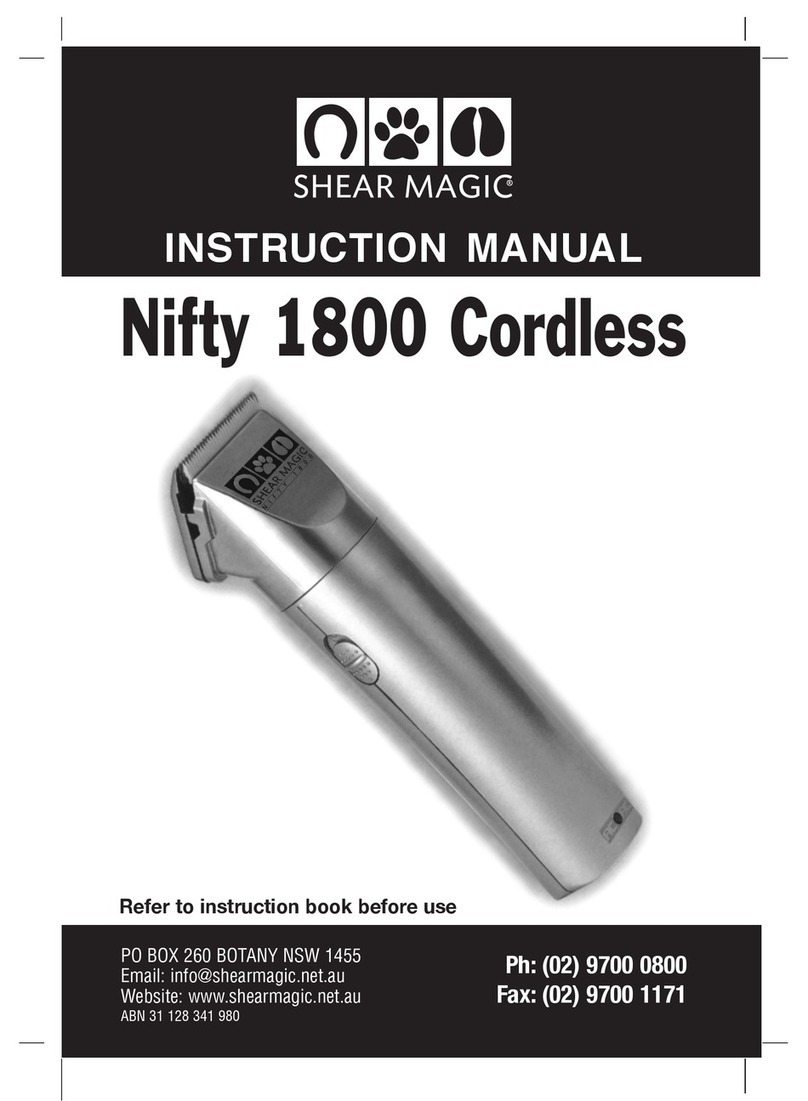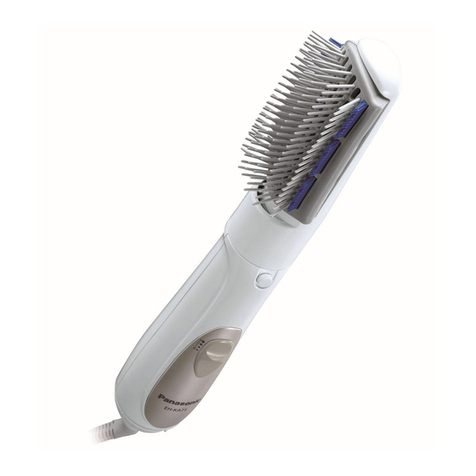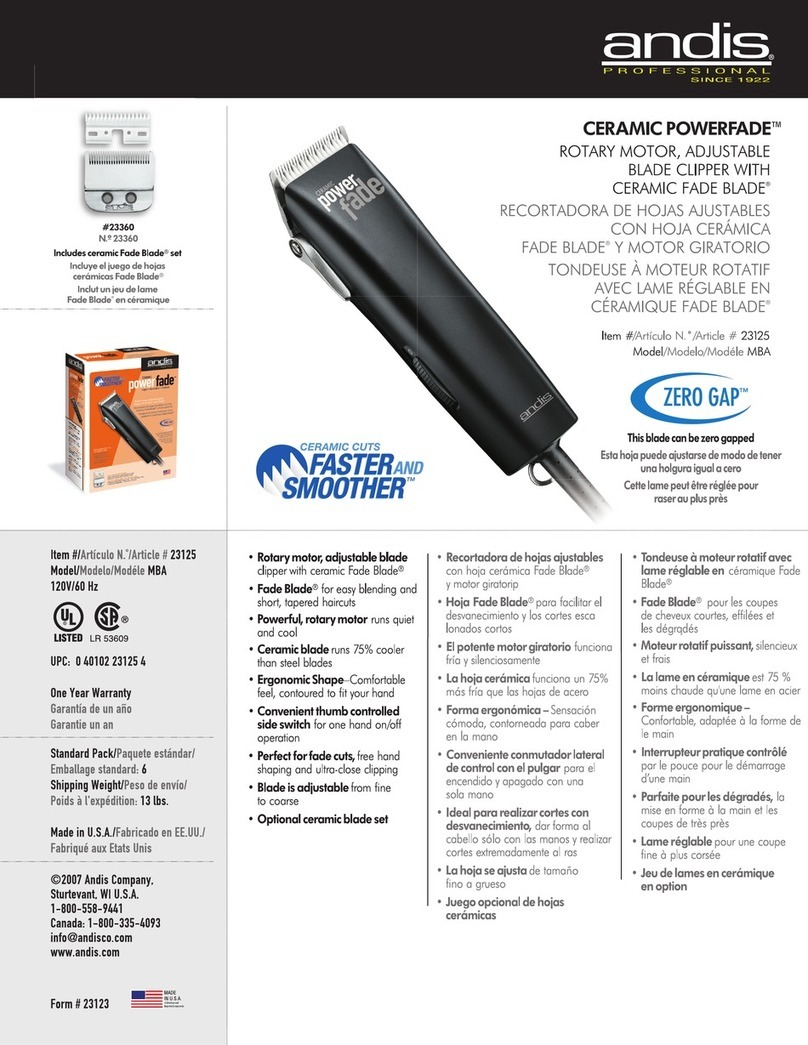
9
ENGLISH
de
en
fr
it
es
pt
nl
da
sv
no
fi
tr
pl
cs
sk
hr
hu
sl
ro
bg
ru
uk
et
lv
lt
el
ar
Operation
Preparation
Keep the packaging material for safe storage or transport
later.
fCheck that the contents are complete.
fCheck all the parts for possible transport damage.
Safety
Caution! Damage due to incorrect power supply.
fOnly operate the appliance with the voltage stated on
the nameplate.
Charging the battery
1. Connect the appliance plug on the plug-in transformer to the
charging stand socket (Fig.4
ⓐ
).
·The appliance can also be connected directly to the
plug-in transformer for charging (Fig.2
ⓐ/ⓑ
).
·Battery overcharging is prevented thanks to intelligent
charge management.
2. Connect the plug-in transformer to the mains socket (Fig.4
ⓑ
).
3. Switch off the appliance using the on/off switch (Fig.3
ⓑ
).
4. Place the appliance in the charging stand (Fig. 4) or connect
directly to the plug-in transformer (Fig.2
ⓐ
/
ⓑ
). The charging
process starts.
·During charging, the charging indicator shines green.
·After the appliance has been removed from the charging
stand, the charging indicator will go out (power saving
mode).
·The accuracy of the battery power indicator can be
increased by fully discharging the battery from time
to time and then recharging it in one uninterrupted
charging process.
5. Once the battery is fully charged, the charging indicator will flash
green.
Battery operation
1. Switch on the appliance using the on/off switch and switch off after
use (Fig. 3
ⓐ
/
ⓑ
).
·Once the red battery power indicator has lit up, the
appliance still has around 10% residual capacity. Now
recharge the appliance.
·Recommendation: To extend the battery operating life,
you should only recharge the battery when the red bat-
tery power indicator lights up during battery operation.
·In case of insufficient maintenance of the blade set, the
operating time can be reduced considerably.
Mains operation
Caution! Damage due to use of the appliance with the
plug-in transformer permanently plugged in (mains
operation)
The appliance is not designed to be used with the plug-in
transformer permanently plugged in (mains operation). The
plug-in transformer connecting cable is not designed for
mechanical stress in continuous operation.
fMains operation is only recommended for short periods
of use, if the battery is discharged.
1. Connect the appliance plug on the plug-in transformer to the appli-
ance socket (Fig. 2
ⓐ
).
2. Connect the plug-in transformer to the mains socket (Fig.2
ⓑ
).
3. Switch on the appliance using the on/off switch, and switch off
after use (Fig. 3
ⓐ
/
ⓑ
).
Operation
Cutting with the attachment comb
The appliance can also be operated with attachment combs.
Depending on the model, the following attachment combs
are included as standard:
3mm, 6mm, 9mm and 12mm, 18mm and 25mm cutting
lengths.
Attaching/removing the attachment comb
1. Slide the attachment comb on to the blade set in the direction of
the arrow until it reaches the limit stop (Fig.5
ⓐ
).
2. The attachment comb can be removed by pushing it in the direc-
tion of the arrow (Fig.5
ⓑ
).
Maintenance
Warning! Injuries and material damage due to incorrect
handling.
fSwitch off the appliance before cleaning it or performing
any maintenance and disconnect it from the mains.
Cleaning and care
Danger! Electric shock due to penetration of liquid.
fDo not immerse the appliance in water!
fDo not allow any liquid to get inside the appliance.
Caution! Danger from aggressive chemicals.
Aggressive chemicals could damage the appliance and
accessories.
fNever use solvents or scouring agents.
fOnly use cleaning agents and blade set oil recom-
mended by the manufacturer.
Accessories and spare parts are available from your dealer or
our service centre.
fRemove the attachment comb (Fig. 5
ⓑ
) and lift the blade set out
of the housing (Fig.6
ⓐ
). Use the cleaning brush to remove any cut
hairs from the housing opening and from the blade set (Fig. 7).
fOnly wipe the appliance with a soft, slightly damp cloth.
